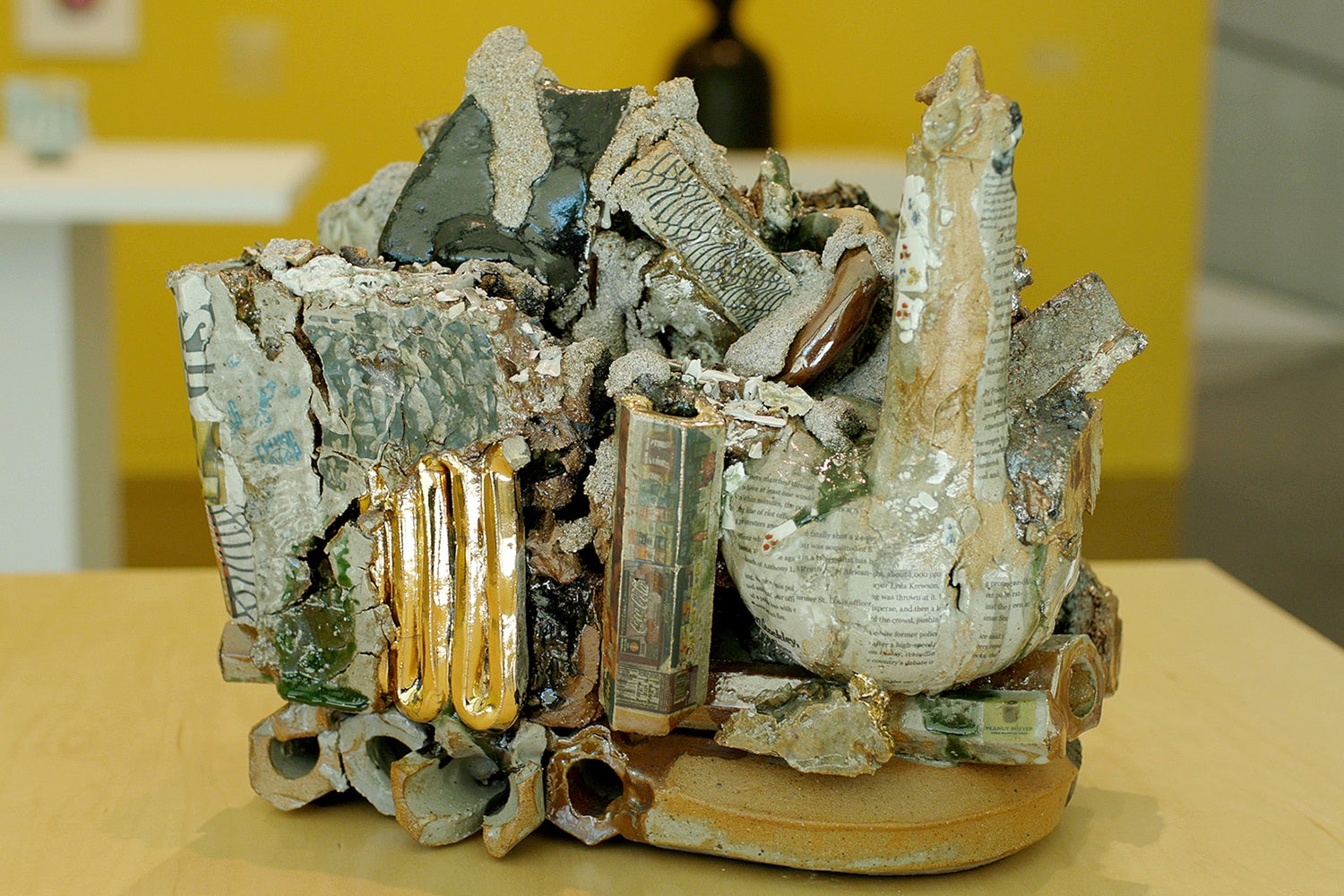From ancient pottery and medicinal clay to 3D-printed joints and pajamas that restore athletes’ muscles, the use of ceramics for objects rooted in decoration, ritual and utility is as old as it is expansive. The practices of four living artists whose exploration of the medium provides commentary on its past and insight for the future are presented in Formed & Fired: Contemporary American Ceramics at the Anderson Collection at Stanford University.
Go to the web site to view the video.
The exhibition – which features 11 works by Kathy Butterly, Kahlil Robert Irving, Simone Leigh and Brie Ruais – was postponed from spring 2020 and will be on view upon the museum’s reopening, hopefully in early 2021. A virtual tour of the show is available online now.
“By sharing the work and voices of these contemporary artists, our visitors can engage with current issues while reflecting on work in the permanent collection,” said Jason Linetzky, director of the Anderson Collection. “Formed & Fired gives us an opportunity to present innovative sculptors who ground their work in social histories while interrogating them through the expressive qualities of ceramics.”
Despite a resurgence of interest in the artform, ceramics were previously considered lesser when compared with other genres, like paintings or bronzes. Artists in the 1950s and 1960s, particularly those in the California Clay Movement, worked to counter the perception and elevate the medium beyond craft to fine art. Now, a new generation of ceramicists is further innovating through inventive carving, firing and glazing techniques coupled with allusions to race, gender, politics, digital media and the environment.
For example, Linetzky explained, Ruais starts her large, wall-mounted starburst pieces with a quantity of clay equal to the weight of her body and pushes it outward to create a physical record of her gestures that is inextricable from the piece’s final contours, inherently insisting that the female body is seen. Irving raises questions about industrial production and proprietorship in his assemblages, some of which are molded and cast to resemble discarded bottles, concrete and social media ads or newsprint featuring headlines about police violence against Black men. It was described by Cultured Magazine as “work that explores what it means to be American.”
“When I am heading into the studio or I am materializing thoughts around what I am desiring to make, the possibilities are endless,” said Irving. “There are material constraints, of course, but there are avenues of making today that are so exciting.”
While distinct in form and style, Butterly, Irving, Leigh and Ruais have each been the subject of recent acclaim. Additionally, Leigh was awarded the Guggenheim Fellowship and Hugo Boss Prize. Upon her work being unveiled as the inaugural winner of the High Line in New York City’s series of large-scale commissions, it was designated “the best thing in the Hudson Yards area.” In October, she became the first Black woman to represent the United States at the Venice Biennale, which will next occur in April 2022.
As artists rewrite narratives within art history and beyond it, their work takes on new meaning in the context of a changed and changing society.
“In particular, Kahlil Robert Irving’s work resonates with me right now in a very contemporary way. He looks at what’s discarded and hand crafts it, with great care, into a beautiful object that’s given a different life,” said Aimee Shapiro, director of programming and engagement at the Anderson Collection. “He’s a young artist whose work addresses issues of police brutality and racism – issues that have existed for a long time and came to the forefront this year. I can’t help but want to be in the galleries to look at his work really closely in response. In addition, his use of news clippings illustrates this moment of reckoning in our country.
“Not to mention that views on the tactile have changed so much in the last six months,” Shapiro continued. “The handmade is more meaningful now – and perhaps is even more so when you consider how purposeful these artists utilize form and fire. Their modern processes are evident in the clay forms, yet they also evoke the course of human change from its start.”
The Anderson Collection and the Cantor Arts Center will remain closed through the end of 2020. They will reopen when conditions allow.
